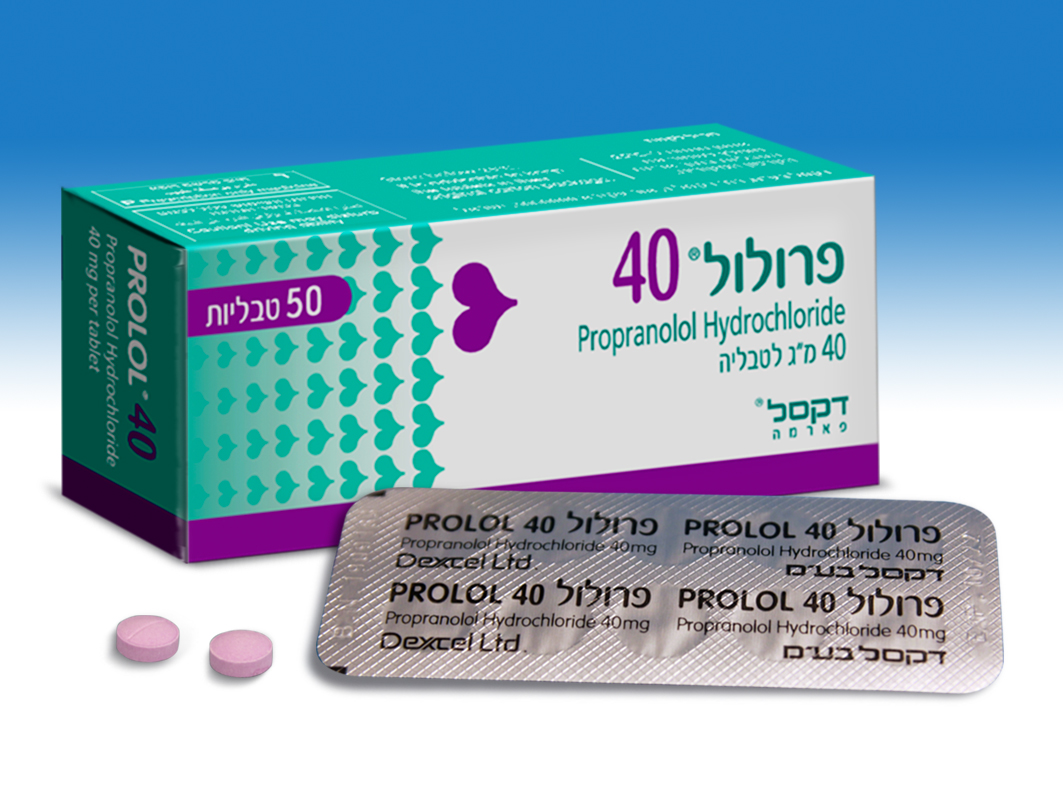Quest for the right Drug

פרולול 40 PROLOL 40 (PROPRANOLOL HYDROCHLORIDE)
תרופה במרשם
תרופה בסל
נרקוטיקה
ציטוטוקסיקה
צורת מתן:
פומי : PER OS
צורת מינון:
טבליה : TABLETS
עלון לרופא
מינוניםPosology התוויות
Indications תופעות לוואי
Adverse reactions התוויות נגד
Contraindications אינטראקציות
Interactions מינון יתר
Overdose הריון/הנקה
Pregnancy & Lactation אוכלוסיות מיוחדות
Special populations תכונות פרמקולוגיות
Pharmacological properties מידע רוקחי
Pharmaceutical particulars אזהרת שימוש
Special Warning עלון לרופא
Physicians Leaflet
Contraindications : התוויות נגד
4.3 Contraindications Hypersensitivity to the active substance or to any of the excipients listed in section 6.1. Propranolol must not be used if there is a history of bronchial asthma or bronchospasm. The product label states the following warning: “Do not take Propranolol if you have a history of asthma or wheezing”. A similar warning appears in the patient information leaflet. Bronchospasm can usually be reversed by beta2 agonist bronchodilators such as salbutamol. Large doses of the beta2 agonist bronchodilator may be required to overcome the beta blockade produced by propranolol and the dose should be titrated according to the clinical response; both intravenous and inhalational administration should be considered. The use of intravenous aminophylline and/or the use of ipratropium (given by nebuliser) may also be considered. Glucagon (1 to 2 mg given intravenously) has also been reported to produce a bronchodilator effect in asthmatic patients. Oxygen or artificial ventilation may be required in severe cases. Propranolol as with other beta-blockers must not be used in patients with any of the following conditions: bradycardia; cardiogenic shock; hypotension; metabolic acidosis; after prolonged fasting; severe peripheral arterial circulatory disturbances; second or third degree heart block; sick sinus syndrome; untreated phaeochromocytoma; uncontrolled heart failure or Prinzmetal's angina. Propranolol must not be used in patients prone to hypoglycaemia, i.e., patients after prolonged fasting or patients with restricted counter-regulatory reserves. Patients with restricted counter regulatory reserves may have reduced autonomic and hormonal responses to hypoglycaemia which includes glycogenolysis, gluconeogenesis and /or impaired modulation of insulin secretion. Patients at risk for an inadequate response to hypoglycaemia includes individuals with malnutrition, prolonged fasting, starvation, chronic liver disease, diabetes and concomitant use of drugs which block the full response to catecholamines.

פרטי מסגרת הכללה בסל
התרופה תינתן לטיפול במקרים האלה:א. יתר לחץ דםב. תעוקת חזה (angina pectoris)ג. טכיקרדיה סופרא ונטריקולרית (supraventricular tachycardia)ד. פרפור פרוזדורים (Atrial fibrillation)ה. רפרוף פרוזדורים (Atrial flutter)ו. הפרעת קצב על רקע שימוש בדיגיטאליס (digitalis induced arrhythmia)ז. קרדיומיופתיה היפרטרופית חסימתית (hypertrophic obstructive cardiomyopathy)ח. לאחר אוטם שריר הלב (post myocardial infarction)ט. היפרתירואידיזםי. רעד ראשוני (essential tremor)יא. מיגרנהיב. פיאוכרומוציטומהיג. מניעת אירועים היפוקסיים (hypoxic spells) בילדים הלוקים ב-Tetralogy of Fallot
שימוש לפי פנקס קופ''ח כללית 1994
Hypertension, angina pectoris, supraventricular tachycardia, atrial fibrillation and flutter, digitalis induced arrhythmia, hypertrophic obstructive cardiomyopathy, post myocardial infarction, hyperthyroidism, essential tremor, migraine, pheochromocytoma. Children: prevention of hypoxic spells in Tetralogy of Fallot
תאריך הכללה מקורי בסל
01/01/1995
הגבלות
תרופה שאושרה לשימוש כללי בקופ'ח
מידע נוסף
